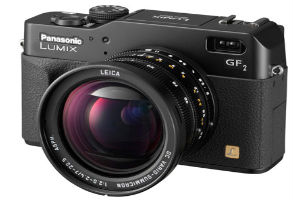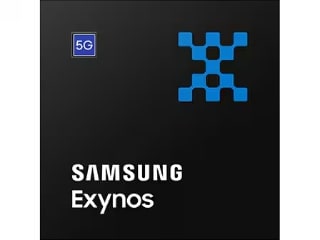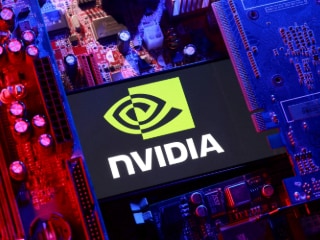- Home
- Cameras
- Cameras News
- Small cameras, big sensors
Small cameras, big sensors
By David Pogue, New York Times | Updated: 5 June 2012 02:14 IST

Click Here to Add Gadgets360 As A Trusted Source

Advertisement
If you want an easy puzzle, solve a Rubik's Cube.
If you want something more challenging, balance the national budget.
But if you really want a head-pounder, try making a tiny camera with a big sensor.
The problem is physics. A big sensor records superior light, colour and detail. But to flood its surface with light, the lens has to be big and be a certain distance away.
That's why, for years, there were two kinds of cameras: pocket models, with tiny sensors that produce blurry or grainy photos in low light and S.L.R. cameras, those big-sensor, big-body, heavy black beasts used by professionals.
In the last couple of years, though, things have changed. There's a new class of camera whose size (both body and sensor) falls in between those two time-honored extremes. They represent a rethinking of every single design element, a jettisoning of every nonessential component, in pursuit of a tiny, big-sensor camera. Because that, after all, is what the world really wants.
Two of the smallest cameras yet have just arrived: the Panasonic Lumix GF2 ($600 with 3X zoom lens) and Olympus E-PL2 ($520 with 3X lens). They're both 12-megapixel Micro Four-Thirds cameras, a format dreamed up by Panasonic and Olympus about three years ago. All of these cameras have the same-size sensor -- not as big as an S.L.R.'s, but much bigger than a compact camera's -- and accommodate the same family of lenses, now numbering about 20.
How small are they? Well, the Panasonic's body is 4.4 by 2.7 by 1.3 inches. That's darned small. You've eaten brownies bigger than this camera.
Panasonic says it's the smallest interchangeable-lens camera in the world -- with a flash. (Clearly, that's a veiled reference to the even more ridiculously small Sony NEX5, which lacks a built-in flash.) The Olympus is only a fraction porkier.
Now, these cameras aren't so small that you can carry them dangling from your wrist or a neck strap; you'd break bones that way. But the body certainly fits in a coat pocket or, with some discomfort, a pants pocket. It will fit even with the lens on, provided that the lens is a "pancake" (nonzooming) starter lens like the 14 millimeter one that comes with one of the Panasonic kits (it's equivalent of a 28 millimeter traditional camera lens).
In the end, you can't really cheat physics. Getting cameras this small means sacrifices. For example, both of these cameras have a pop-up flash -- and it pops way up high, a trick that minimizes red eye in your subjects -- but it's weak, with only about a six-foot range.
You have full manual controls, of course, since these cameras are meant to be mini-S.L.R.'s. But there's not nearly as much room on these cameras as on an S.L.R., so the buttons are small, cramped and have multiple functions.
Panasonic's solution: a touch screen. That might seem like a great idea, because it gives the designers acres more real estate for displaying controls. It also means that you can touch the spot in the scene where you want the camera to focus -- a neat trick -- and pan around a zoomed-in photo by dragging your finger.
The software is designed with fingertip-size, translucent buttons on the screen -- but unfortunately, they clutter the image and sometimes sit right where you want to tap to focus. You can customize the icons, specifying which ones appear and in what order. But many tasks still take too many steps. And, bizarrely, the touch-screen world ends when you enter the main menu; suddenly you have to use the up/down arrow buttons to navigate.
The Olympus camera uses a more traditional four-way controller, surrounded by a turning ring. It's all tiny, though, and it's easy to click buttons accidentally when you're turning the ring.
Another sacrifice: there's not much room in that tiny body for a big battery. You'll get about 300 shots on a charge from these cameras, which is at the low, low end.
The bigger loss is the optical viewfinder. Both cameras have bright, beautiful three-inch screens that do O.K. in sunlight. But they're nowhere near as good as the eyepiece of a regular S.L.R., especially in low light. The difference in clarity and feeling is especially evident when you compare one of these Micro Four-Thirds cameras with an S.L.R. side-by-side.
Both Olympus and Panasonic are happy to sell you an electronic eyepiece viewfinder that snaps onto the top of the camera. But it costs a lot: $200 for the Panasonic, $250 for the Olympus (a $100 optical glass one is also available). It also fills up the hot shoe where you might have attached a microphone or flash, and besides, it's cheating. Your little camera is less little if it has a big doodad sticking up from the top.
None of this is to say that these aren't great cameras -- they are. Yes, you make some sacrifices. But you do indeed get the holy grail: a tiny camera with a big sensor inside. And the photos make it all worth it. They're bright, beautiful, clear and wide, and you can get that beautiful blurred-background effect that's common in professional portraits. (You can see some samples in the slide show that accompanies this article on The Times Web site.. )
These cameras are really great at video, too. Each has a dedicated Record/Stop button, so you don't have to change modes just to start shooting. Both record in high definition: the Olympus is 720p, the Panasonic is 1080p, although you really can't see any difference. Both cameras offer some cheesy special effects that work both in still and video mode.
Both of these cameras can smoothly change focus, quickly and beautifully, while you're capturing video -- if you zoom or pan to something closer, for example. That's rare in S.L.R.-type cameras. This process isn't as quick or reliable as it is on a camcorder -- gigantic shifts in distance sometimes baffle the refocusing mechanism -- but over all, it works well.
Now, even though these cameras have S.L.R.-like features, they're not real S.L.R.'s. First, they're not nearly as good in low light. The sensor inside is much bigger than a compact camera's, but it's not S.L.R.-size.
Second, because of the mirror-less Micro Four-Thirds design, these cameras aren't as quick to focus as a real S.L.R. Depending on the zoom level and the lighting, the Olympus, in particular, sometimes struggles to focus; you can see it "hunting," adjust the lens in and out as it tries to figure out what's going on.
That doesn't happen as often on the Panasonic. Over all, it's the nicer camera -- it has stereo mikes instead of mono, it's aluminum instead of plastic, and it has a rotation sensor for righting photos you took with the camera on its side -- but it's $80 more expensive, too, and its photos are more likely to require colour correction.
(It also accepts a new Panasonic dual lens that takes 3-D photos, for playback on a 3-D TV -- but it doesn't zoom, doesn't work in video mode, doesn't work in low light and takes only 1.4-megapixel photos.)
And it's not clear that Panasonic has trumped its obvious target, the Sony NEX-5. That camera lacks a built-in flash, but its screen has twice the clarity (and it tilts), the body is smaller and the sensor is bigger -- as big an S.L.R.' s-- so the photos are better. On the other hand, only three lenses are available for the Sony, and its menu system is hopelessly inefficient.
These miniature Micro Four-Thirds cameras cost as much as a real S.L.R., and they teem with compromises. Still, if the world craves a solution to the small camera/big sensor challenge, these models offer some novel solutions to the puzzle.
If you want something more challenging, balance the national budget.
But if you really want a head-pounder, try making a tiny camera with a big sensor.
The problem is physics. A big sensor records superior light, colour and detail. But to flood its surface with light, the lens has to be big and be a certain distance away.
That's why, for years, there were two kinds of cameras: pocket models, with tiny sensors that produce blurry or grainy photos in low light and S.L.R. cameras, those big-sensor, big-body, heavy black beasts used by professionals.
In the last couple of years, though, things have changed. There's a new class of camera whose size (both body and sensor) falls in between those two time-honored extremes. They represent a rethinking of every single design element, a jettisoning of every nonessential component, in pursuit of a tiny, big-sensor camera. Because that, after all, is what the world really wants.
Two of the smallest cameras yet have just arrived: the Panasonic Lumix GF2 ($600 with 3X zoom lens) and Olympus E-PL2 ($520 with 3X lens). They're both 12-megapixel Micro Four-Thirds cameras, a format dreamed up by Panasonic and Olympus about three years ago. All of these cameras have the same-size sensor -- not as big as an S.L.R.'s, but much bigger than a compact camera's -- and accommodate the same family of lenses, now numbering about 20.
How small are they? Well, the Panasonic's body is 4.4 by 2.7 by 1.3 inches. That's darned small. You've eaten brownies bigger than this camera.
Panasonic says it's the smallest interchangeable-lens camera in the world -- with a flash. (Clearly, that's a veiled reference to the even more ridiculously small Sony NEX5, which lacks a built-in flash.) The Olympus is only a fraction porkier.
Now, these cameras aren't so small that you can carry them dangling from your wrist or a neck strap; you'd break bones that way. But the body certainly fits in a coat pocket or, with some discomfort, a pants pocket. It will fit even with the lens on, provided that the lens is a "pancake" (nonzooming) starter lens like the 14 millimeter one that comes with one of the Panasonic kits (it's equivalent of a 28 millimeter traditional camera lens).
In the end, you can't really cheat physics. Getting cameras this small means sacrifices. For example, both of these cameras have a pop-up flash -- and it pops way up high, a trick that minimizes red eye in your subjects -- but it's weak, with only about a six-foot range.
You have full manual controls, of course, since these cameras are meant to be mini-S.L.R.'s. But there's not nearly as much room on these cameras as on an S.L.R., so the buttons are small, cramped and have multiple functions.
Panasonic's solution: a touch screen. That might seem like a great idea, because it gives the designers acres more real estate for displaying controls. It also means that you can touch the spot in the scene where you want the camera to focus -- a neat trick -- and pan around a zoomed-in photo by dragging your finger.
The software is designed with fingertip-size, translucent buttons on the screen -- but unfortunately, they clutter the image and sometimes sit right where you want to tap to focus. You can customize the icons, specifying which ones appear and in what order. But many tasks still take too many steps. And, bizarrely, the touch-screen world ends when you enter the main menu; suddenly you have to use the up/down arrow buttons to navigate.
The Olympus camera uses a more traditional four-way controller, surrounded by a turning ring. It's all tiny, though, and it's easy to click buttons accidentally when you're turning the ring.
Another sacrifice: there's not much room in that tiny body for a big battery. You'll get about 300 shots on a charge from these cameras, which is at the low, low end.
The bigger loss is the optical viewfinder. Both cameras have bright, beautiful three-inch screens that do O.K. in sunlight. But they're nowhere near as good as the eyepiece of a regular S.L.R., especially in low light. The difference in clarity and feeling is especially evident when you compare one of these Micro Four-Thirds cameras with an S.L.R. side-by-side.
Both Olympus and Panasonic are happy to sell you an electronic eyepiece viewfinder that snaps onto the top of the camera. But it costs a lot: $200 for the Panasonic, $250 for the Olympus (a $100 optical glass one is also available). It also fills up the hot shoe where you might have attached a microphone or flash, and besides, it's cheating. Your little camera is less little if it has a big doodad sticking up from the top.
None of this is to say that these aren't great cameras -- they are. Yes, you make some sacrifices. But you do indeed get the holy grail: a tiny camera with a big sensor inside. And the photos make it all worth it. They're bright, beautiful, clear and wide, and you can get that beautiful blurred-background effect that's common in professional portraits. (You can see some samples in the slide show that accompanies this article on The Times Web site.. )
These cameras are really great at video, too. Each has a dedicated Record/Stop button, so you don't have to change modes just to start shooting. Both record in high definition: the Olympus is 720p, the Panasonic is 1080p, although you really can't see any difference. Both cameras offer some cheesy special effects that work both in still and video mode.
Both of these cameras can smoothly change focus, quickly and beautifully, while you're capturing video -- if you zoom or pan to something closer, for example. That's rare in S.L.R.-type cameras. This process isn't as quick or reliable as it is on a camcorder -- gigantic shifts in distance sometimes baffle the refocusing mechanism -- but over all, it works well.
Now, even though these cameras have S.L.R.-like features, they're not real S.L.R.'s. First, they're not nearly as good in low light. The sensor inside is much bigger than a compact camera's, but it's not S.L.R.-size.
Second, because of the mirror-less Micro Four-Thirds design, these cameras aren't as quick to focus as a real S.L.R. Depending on the zoom level and the lighting, the Olympus, in particular, sometimes struggles to focus; you can see it "hunting," adjust the lens in and out as it tries to figure out what's going on.
That doesn't happen as often on the Panasonic. Over all, it's the nicer camera -- it has stereo mikes instead of mono, it's aluminum instead of plastic, and it has a rotation sensor for righting photos you took with the camera on its side -- but it's $80 more expensive, too, and its photos are more likely to require colour correction.
(It also accepts a new Panasonic dual lens that takes 3-D photos, for playback on a 3-D TV -- but it doesn't zoom, doesn't work in video mode, doesn't work in low light and takes only 1.4-megapixel photos.)
And it's not clear that Panasonic has trumped its obvious target, the Sony NEX-5. That camera lacks a built-in flash, but its screen has twice the clarity (and it tilts), the body is smaller and the sensor is bigger -- as big an S.L.R.' s-- so the photos are better. On the other hand, only three lenses are available for the Sony, and its menu system is hopelessly inefficient.
These miniature Micro Four-Thirds cameras cost as much as a real S.L.R., and they teem with compromises. Still, if the world craves a solution to the small camera/big sensor challenge, these models offer some novel solutions to the puzzle.
Comments
Get your daily dose of tech news, reviews, and insights, in under 80 characters on Gadgets 360 Turbo. Connect with fellow tech lovers on our Forum. Follow us on X, Facebook, WhatsApp, Threads and Google News for instant updates. Catch all the action on our YouTube channel.
Further reading:
Rubik's Cube, camera
Popular on Gadgets
- Samsung Galaxy Unpacked 2025
- ChatGPT
- Redmi Note 14 Pro+
- iPhone 16
- Apple Vision Pro
- Oneplus 12
- OnePlus Nord CE 3 Lite 5G
- iPhone 13
- Xiaomi 14 Pro
- Oppo Find N3
- Tecno Spark Go (2023)
- Realme V30
- Best Phones Under 25000
- Samsung Galaxy S24 Series
- Cryptocurrency
- iQoo 12
- Samsung Galaxy S24 Ultra
- Giottus
- Samsung Galaxy Z Flip 5
- Apple 'Scary Fast'
- Housefull 5
- GoPro Hero 12 Black Review
- Invincible Season 2
- JioGlass
- HD Ready TV
- Laptop Under 50000
- Smartwatch Under 10000
- Latest Mobile Phones
- Compare Phones
Latest Gadgets
- OnePlus 15R
- Realme Narzo 90x 5G
- Realme Narzo 90 5G
- Vivo S50 Pro Mini
- Vivo S50
- OPPO Reno 15c
- Redmi Note 15 5G
- Redmi Note 15 Pro 5G
- Asus ProArt P16
- MacBook Pro 14-inch (M5, 2025)
- Infinix Xpad Edge
- OnePlus Pad Go 2
- Just Corseca Skywatch Pro
- Honor Watch X5
- Acerpure Nitro Z Series 100-inch QLED TV
- Samsung 43 Inch LED Ultra HD (4K) Smart TV (UA43UE81AFULXL)
- Asus ROG Ally
- Nintendo Switch Lite
- Haier 1.6 Ton 5 Star Inverter Split AC (HSU19G-MZAID5BN-INV)
- Haier 1.6 Ton 5 Star Inverter Split AC (HSU19G-MZAIM5BN-INV)
© Copyright Red Pixels Ventures Limited 2025. All rights reserved.












